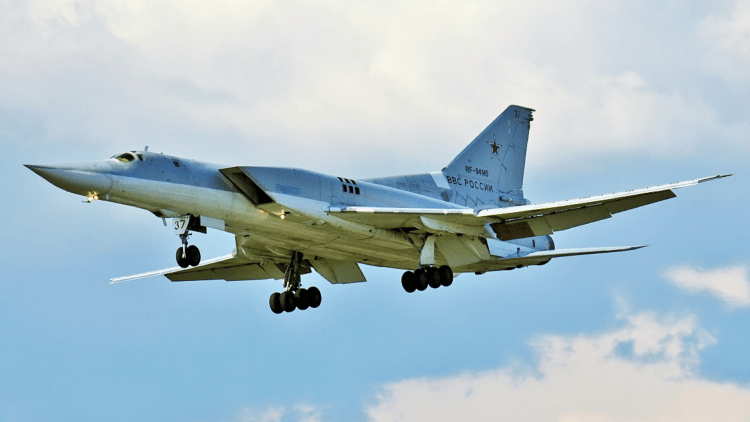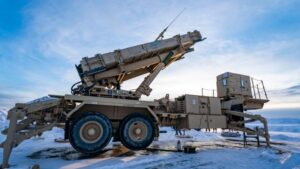As the conflict between Russia and Ukraine continues to unfold, a noticeable shift in Russia’s military tactics has caught the attention of Western analysts.
Over the past several months, Russia has refrained from using its large strategic bombers to conduct standoff long-range air-to-ground missile strikes in Ukraine.
This apparent change in strategy has raised questions and drawn the interest of the British Ministry of Defense and NATO analysts.
In this article, we will explore the reasons behind this shift and how early warning systems are crucial in shaping the ongoing conflict.
Is It A Tactical Pause?
In a recent intelligence update, the British Ministry of Defense notes that this pause in strategic bomber strikes marks “one of the longest gaps in such strikes since the conflict began.”
While some suggest that Russia may be using this time to replenish its stock of cruise and ballistic missiles and other munitions, the broader implications of this strategic shift must be considered.
Early Warning Systems in Play
The core reason behind this altered strategy appears to be the advance notice that Ukraine receives before such strikes occur.
A network of early warning systems, primarily operated by the United States and NATO, makes this advance notice possible.
Planes such as the RC-135 Rivet and the E-3 Sentry Airborne Warning Control System (AWACS) are actively patrolling areas outside Ukraine’s western border, closely monitoring Russian military aircraft.
These airborne surveillance systems work in tandem with the US’s Space-Based Infrared (SBIRS) satellite network.
The SBIRS provides real-time data on the heat signatures of Russian bombers and their missiles, helping predict their arrival time at Ukrainian targets.
This synchronized approach ensures that Ukraine has approximately 2 to 3 hours of advance notice to prepare for incoming missile strikes.
A British RC-135W Rivet, 2018 (Image source: Wikimedia Commons)
Such early warning systems empower Ukrainian air defense forces to be on high alert and respond quickly to incoming threats.
The Impact on Aerial Tactics
The availability of advance warning fundamentally alters the dynamics of the aerial conflict.
While Russia’s strategic bombers are still capable of reaching their targets, the success rate of their strikes has been significantly reduced.
Ukrainian air defense radars are alerted in advance, allowing for a more coordinated and effective response.
Consequently, many Russian missiles have been intercepted, causing periodic claims of increasing shootdowns by Ukrainian forces.
This transformation in aerial tactics benefits Ukraine by mitigating the immediate damage caused by missile strikes.
It also serves as a deterrent to Russia, which has seen its missiles intercepted before they reach their intended targets.
A Strategic Advantage for Ukraine
In this ongoing conflict, while Russia might still be considered the winner, it is worth noting that Ukraine is achieving a strategic advantage, particularly in terms of defense.
Intercepting Russian missiles, even at the cost of expending Western-supplied surface-to-air missiles (SAM), has slowed the Russian military’s progress.
However, it’s essential to consider the limitations.
Ukraine’s SAMs are not produced within the country but originated from European and American stockpiles. This reliance on external supplies highlights a vulnerability in Ukraine’s military preparedness.
Furthermore, Ukraine’s defense industries have been plagued by years of underfunding, hindering their ability to rapidly mobilize production.
Replenishing tens of millions of ammunition and meeting the demands of a full-scale conventional war would require years of dedicated efforts. Therefore, the complexity of Ukraine’s military and industrial challenges is underscored.
Strategic Implications and the Broader Conflict
The shift in Russia’s aerial tactics and the effectiveness of early warning systems showcase the evolving nature of modern warfare.
It’s no longer just about the capabilities of military hardware but also the ability to anticipate and respond to threats in real time.
This development should not be isolated from the broader context of the Russia-Ukraine conflict.
The ongoing conflict has significant implications for the region and international stability. It is a situation that demands ongoing diplomatic efforts to find a peaceful resolution.
Below is an informational video on how some historians predict the end of the Russia-Ukraine war.
In conclusion, the pause in Russia’s use of strategic bombers for air-launched cruise missile strikes in Ukraine highlights the evolving nature of conflict and the importance of early warning systems in shaping the outcome of military engagements.
While Ukraine benefits from having advanced notice and improved air defense, it also faces challenges in replenishing its military supplies and strengthening its defense industry.
The conflict remains a complex issue with implications that extend beyond the borders of the two nations. This emphasizes the need for a diplomatic solution to end the hostilities and restore stability in the region.
—
Disclaimer: SOFREP utilizes AI for image generation and article research. Occasionally, it’s like handing a chimpanzee the keys to your liquor cabinet. It’s not always perfect and if a mistake is made, we own up to it full stop. In a world where information comes at us in tidal waves, it is an important tool that helps us sift through the brass for live rounds.



